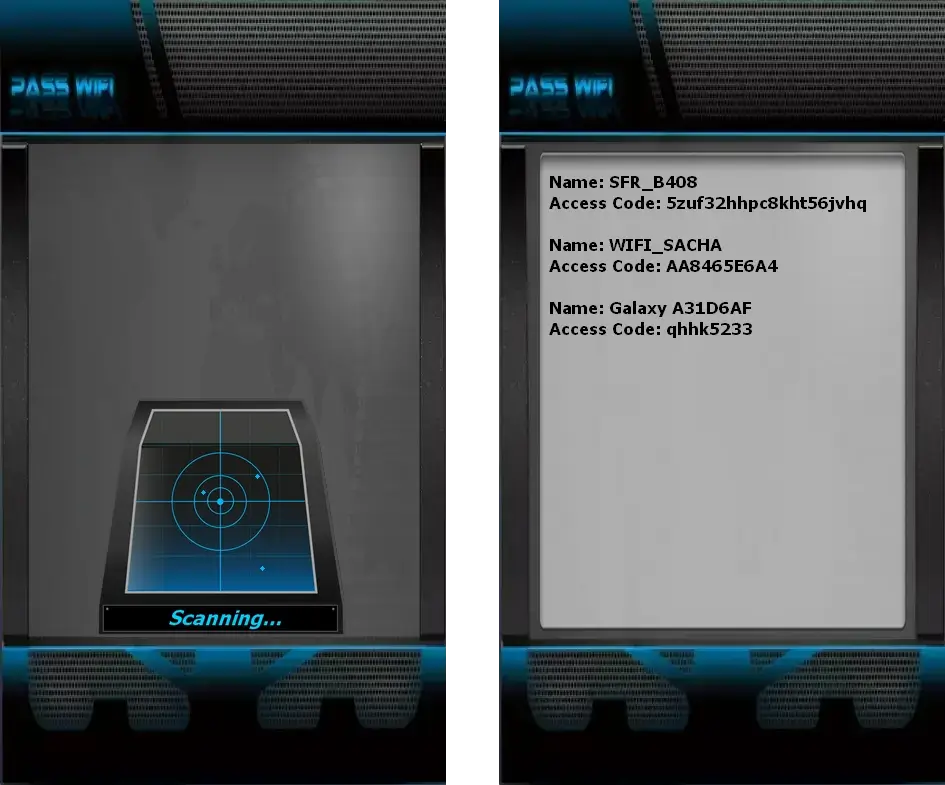WiFi Hacking Techniques
Understand the methods used by hackers to access WiFi networks
PASS WIFI - Advanced WiFi Hacking Solution
ISO 9001:2015 & ISO/IEC 27001:2013 certified platform to access WiFi networks.

Exclusive Features of PASS WIFI
PASS WIFI is the application certified compliant with ISO 9001:2015 & ISO/IEC 27001:2013 standards, offering free access to all wireless communication protocols. Using the power of artificial intelligence, it enables in-depth analysis of network connections to quickly decrypt the WiFi password.
- AI technology to hack WiFi networks
- Bypasses security protocols without triggering alerts
- Recovers keys even after configuration changes
- Fast and discreet process without alerting the owner
- Compatible with all devices (mobile, computer, tablet)
- Unlimited access to WiFi networks
Key Benefits:
- International security certifications
- 30-day trial guarantee
- Compliance with protection standards
- Compatibility with all routers and modems
- Access even with advanced security enabled
How to hack a network with PASS WIFI
PASS WIFI uses an artificial intelligence algorithm that scans router communications and wireless network protocols, allowing the recovery of WiFi passwords in just a few minutes, wherever you are.
To achieve this, PASS WIFI combines packet sniffing and real-time traffic analysis to intercept encrypted network data. Its AI-driven system analyzes traffic patterns within encryption protocols. Thanks to a sophisticated deep cryptographic decryption engine, it decrypts passwords by capturing authentication exchanges, key exchange mechanisms, and handshake processes.
- Download the application from the official website
- Open PASS WIFI and launch the network analysis
- Let the AI algorithm scan the connections
- Retrieve the decrypted password in just a few minutes
- Connect to the WiFi network without restrictions
Exclusive Use: DO NOT use PASS WIFI to access networks you are not authorized for.
Innovative WiFi Technology
Thanks to its powerful artificial intelligence, PASS WIFI analyzes access patterns to identify vulnerabilities in WiFi protocols. Its multi-layer decryption system creates a dynamic shield that adapts to new protections.
PASS WIFI's exclusive technology neutralizes security measures, ensuring easy access to WiFi networks.
Brute Force Attacks
A method involving testing all possible combinations until the correct password is found.
Techniques used:
- Use of dictionaries of common passwords
- Combinatorial attacks with transformation rules
- GPU optimization to speed up testing
- Distributed attacks across multiple machines
Deauthentication Attacks
Techniques aimed at disconnecting legitimate users to capture the handshake.
How it works:
- Detect devices connected to the network
- Send deauthentication packets
- Capture the reconnection process
- Recover the handshake for decryption
- Crack the password with specialized tools
Exploiting WPS Vulnerabilities
Attacks targeting security bypass through the router's WPS system.
Attack mechanisms:
- WPS PIN attack (8 digits)
- Exploitation of faulty implementations
- Brute force attacks on the PIN
- Recovery of WPA key via the PIN